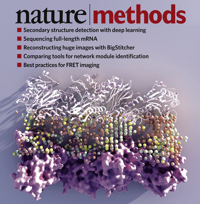Filter
Associated Lab
Publication Date
- Remove September 1, 2019 filter September 1, 2019
- Remove September 2019 filter September 2019
- Remove 2019 filter 2019
Type of Publication
3 Publications
Showing 1-3 of 3 resultsNeurons and glia operate in a highly coordinated fashion in the brain. Although glial cells have long been known to supply lipids to neurons via lipoprotein particles, new evidence reveals that lipid transport between neurons and glia is bidirectional. Here, we describe a co-culture system to study transfer of lipids and lipid-associated proteins from neurons to glia. The assay entails culturing neurons and glia on separate coverslips, pulsing the neurons with fluorescently labeled fatty acids, and then incubating the coverslips together. As astrocytes internalize and store neuron-derived fatty acids in lipid droplets, analyzing the number, size, and fluorescence intensity of lipid droplets containing the fluorescent fatty acids provides an easy and quantifiable measure of fatty acid transport. © 2019 The Authors.
Light-sheet imaging of cleared and expanded samples creates terabyte-sized datasets that consist of many unaligned three-dimensional image tiles, which must be reconstructed before analysis. We developed the BigStitcher software to address this challenge. BigStitcher enables interactive visualization, fast and precise alignment, spatially resolved quality estimation, real-time fusion and deconvolution of dual-illumination, multitile, multiview datasets. The software also compensates for optical effects, thereby improving accuracy and enabling subsequent biological analysis.
The cyanobacterial culture HT-58-2, composed of a filamentous cyanobacterium and accompanying community bacteria, produces chlorophyll a as well as the tetrapyrrole macrocycles known as tolyporphins. Almost all known tolyporphins (A-M except K) contain a dioxobacteriochlorin chromophore and exhibit an absorption spectrum somewhat similar to that of chlorophyll a. Here, hyperspectral confocal fluorescence microscopy was employed to noninvasively probe the locale of tolyporphins within live cells under various growth conditions (media, illumination, culture age). Cultures grown in nitrate-depleted media (BG-11 vs. nitrate-rich, BG-11) are known to increase the production of tolyporphins by orders of magnitude (rivaling that of chlorophyll a) over a period of 30-45 days. Multivariate curve resolution (MCR) was applied to an image set containing images from each condition to obtain pure component spectra of the endogenous pigments. The relative abundances of these components were then calculated for individual pixels in each image in the entire set, and 3D-volume renderings were obtained. At 30 days in media with or without nitrate, the chlorophyll a and phycobilisomes (combined phycocyanin and phycobilin components) co-localize in the filament outer cytoplasmic region. Tolyporphins localize in a distinct peripheral pattern in cells grown in BG-11 versus a diffuse pattern (mimicking the chlorophyll a localization) upon growth in BG-11. In BG-11, distinct puncta of tolyporphins were commonly found at the septa between cells and at the end of filaments. This work quantifies the relative abundance and envelope localization of tolyporphins in single cells, and illustrates the ability to identify novel tetrapyrroles in the presence of chlorophyll a in a photosynthetic microorganism within a non-axenic culture.

